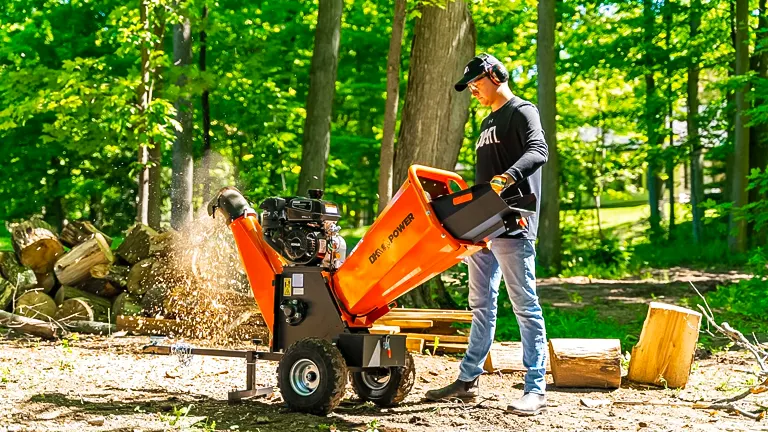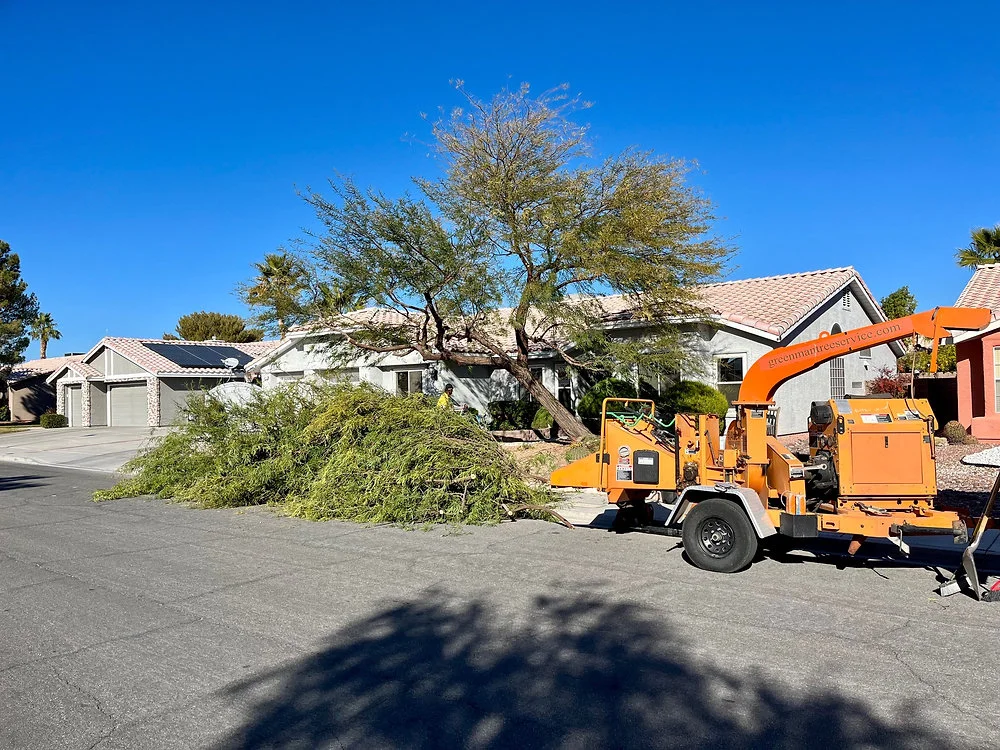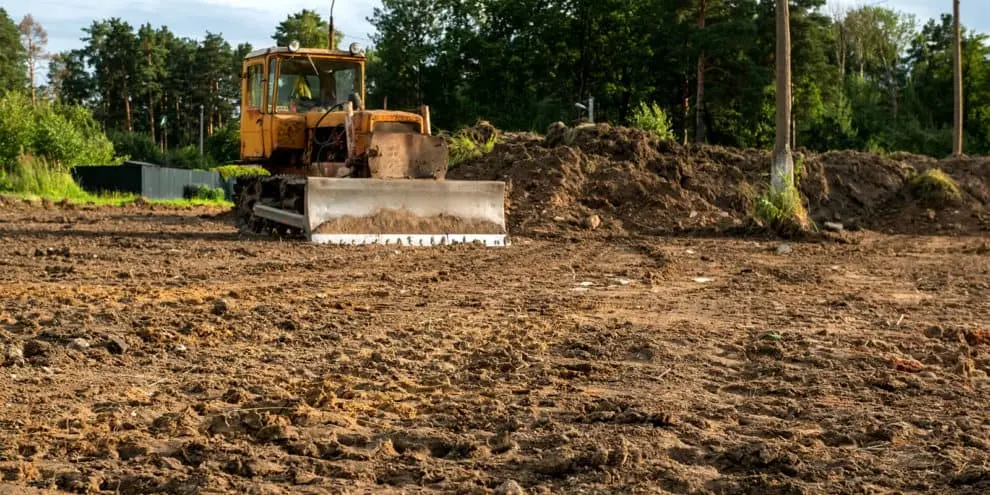The Environmental Benefits of Professional Wood Chipping Service
Are you looking to clean up your property or remove excess wood debris? Professional wood chipping services offer a convenient solution. In this guide, we'll introduce you to the basics of these services, helping you understand what they entail and how they can benefit you.
Professional wood chipping services specialize in the removal and recycling of wood waste. They use industrial-grade chippers to break down branches, logs, and other wood debris into smaller, manageable pieces. These chips can then be reused for various purposes, such as landscaping, mulching, or biomass fuel.
These companies have the equipment and expertise to quickly process large volumes of wood waste, saving time and effort. Additionally, recycling wood waste contributes to environmental sustainability by reducing the need for landfill space and minimizing carbon emissions.
Consider experience, reliability, and cost factors when choosing a wood chipping service. Look for companies with a record of quality service and positive customer reviews.
Professional wood chipping services offer a convenient and eco-friendly solution for managing wood waste. By understanding the basics of these services and selecting a reputable provider, you can effectively clean up your property while minimizing your environmental impact.
Simple Ways to Reduce Greenhouse Gas Emissions
In today's world, finding ways to reduce greenhouse gas emissions is more important than ever. Thankfully, there are easy things we can do to decrease our environmental effects.
Energy consumption reduction is one practical strategy for lowering greenhouse gas emissions. Using energy-efficient appliances, disconnecting electronics, and turning off lights when not in use can all help with this. Reducing energy consumption lowers the need for fossil fuels, such as coal and oil, significantly impacting greenhouse gas emissions.
Another way to reduce emissions is by choosing sustainable transportation options. Walking, biking, carpooling, and using public transportation are all eco-friendly alternatives to driving alone in a car. Additionally, switching to electric or hybrid vehicles can significantly lower emissions from transportation.
Recycling, composting, and reducing waste help decrease emissions from landfills. Eating a plant-based diet and buying locally grown foods can lower agriculture and transportation emissions.
Reducing greenhouse gas emissions doesn't have to be complicated. By making simple changes to our energy consumption, transportation habits, and daily routines, we can all help protect the planet for future generations. Together, we can make a difference in the fight against climate change.
A Guide to Preserving Health and Biodiversity
Preserving our forests' health and biodiversity is crucial for our planet's well-being. In addition to providing habitat for innumerable species, forests also clean our air and are essential for maintaining the planet's temperature. Here are a few easy ways to help keep our forests rich and healthy.
Firstly, supporting sustainable forestry practices is essential. This means harvesting trees responsibly, replanting areas that have been cleared, and protecting old-growth forests. Sustainable forestry helps maintain the balance of ecosystems and ensures that forests can continue to thrive for future generations.
Another essential aspect of preserving forest health is preventing deforestation. Deforestation destroys wildlife habitat and releases carbon dioxide into the atmosphere, contributing to climate change.
Additionally, raising awareness about the importance of forests is critical to their preservation. Educating others about the benefits of forests and the threats they face can inspire action and foster a sense of stewardship for these vital ecosystems. Getting involved in local conservation efforts, such as tree planting initiatives or wildlife habitat restoration projects, is a tangible way to impact forest health and biodiversity positively.
Preserving the health and biodiversity of forests is essential for the well-being of our planet. By supporting sustainable forestry practices, preventing deforestation, and raising awareness, we can all contribute to protecting these invaluable ecosystems for future generations.
Tackling Wildfire Risks
Mitigating wildfire risks is critical for safeguarding communities and protecting natural landscapes. Wildfires can devastate homes, wildlife habitats, and ecosystems, but there are practical measures we can take to reduce their impact. Here are some simple steps to help mitigate wildfire risks.
Firstly, creating defensible space around homes and buildings is essential. This involves removing flammable vegetation and materials from structures, such as dead leaves, brush, and firewood piles.
Secondly, practicing responsible landscaping can help reduce wildfire risks. Choosing fire-resistant plants, such as succulents and deciduous trees, and spacing them apart can help prevent the spread of flames. Keeping lawns well-watered and mowed short can also create a barrier against advancing fires.
Thirdly, building codes and regulations requiring fire-resistant materials and construction techniques can help increase the resilience of homes and structures in wildfire-prone areas. Materials like metal roofing, fire-rated windows, and non-combustible siding can help reduce the likelihood of structures igniting during a wildfire.
Furthermore, fostering community preparedness and collaboration is crucial for wildfire mitigation. Establishing neighborhood wildfire preparedness plans, organizing evacuation drills, and promoting communication channels can help ensure communities are ready to respond effectively during a wildfire.
Mitigating wildfire risks requires proactive individual, community, and policy measures. By creating defensible space, practicing responsible landscaping, implementing building codes, and fostering community preparedness, we can reduce the impact of wildfires and protect lives, property, and natural resources.
Sustainable Land Management
Promoting sustainable land management practices is essential for maintaining the ecosystem and ensuring the well-being of future generations. Here are a few crucial steps in favor of sustainable land management.
Soil conservation is a vital component of sustainable land management. Soil is essential for agriculture since it supplies nutrients and promotes plant growth. Crop rotation, contour plowing, and cover crops are a few techniques that help preserve soil fertility and stop soil erosion, guaranteeing the long-term production of agricultural land.
Another essential activity is preserving and repairing natural environments. Healthy ecosystems provide the basic well-being of both people and wildlife; it is necessary to protect and rest. Preserving and restoring natural habitats, including wetlands, grasslands, and forests, are essential lands and forests.
Promoting sustainable forestry agriculture practices is also critical to sustainable land and biodiversity protection biodiversity protection. Similarly, sustainable agriculture minimizes harmful chemicals, conserves water, and promotes soil health through organic farming and agroforestry practices.
Moreover, raising awareness and educating communities about the importance of sustainable land management is essential for driving positive change.
Promoting sustainable land management practices is crucial for protecting our environment, preserving natural resources, and ensuring a sustainable future. By implementing practices such as soil conservation, habitat protection, and sustainable forestry and agriculture, we can promote a healthier planet for future generations.
Soil Health Boost
Enhancing soil health and preventing erosion are essential for maintaining fertile land and sustainable agricultural practices. Here are some simple yet effective ways to promote soil health and avoid erosion.
Firstly, implementing soil conservation practices is crucial. Techniques such as contour plowing, terracing, and strip cropping help slow water runoff and prevent soil erosion on sloped terrain. By following these practices, farmers can minimize soil loss and preserve soil fertility, ensuring the long-term productivity of their land.
Secondly, promoting the use of cover crops is beneficial for soil health and erosion prevention. Cover crops, such as legumes and grasses, help protect the soil from erosion by covering it with vegetation and improving its structure. They also add organic matter to the soil, enhancing its fertility and moisture retention.
Additionally, practicing no-till or reduced-tillage farming can help prevent soil erosion. Tillage breaks up the soil, making it more susceptible to erosion by wind and water.
Furthermore, planting windbreaks and buffer strips along field edges can help prevent soil erosion by reducing wind speed and trapping sediment. Windbreaks, such as trees and shrubs, act as barriers to wind erosion, while buffer strips of vegetation help filter runoff and prevent soil from being washed away.
Enhancing soil health and preventing erosion are essential for sustainable agriculture and environmental conservation. By implementing soil conservation techniques, encouraging cover crops, abstaining from excessive tillage, and building buffer strips and windbreaks, we can preserve our limited soil resources and guarantee a more environmentally friendly world for future generations.
Powering the Future
Contributing to creating renewable energy is essential to lowering our dependency on fossil fuels and lessening the effects of climate change. This is how creating renewable energy helps create a greener, cleaner future.
Secondly, wind power is another crucial contributor to renewable energy production. Wind turbines harness the wind's kinetic energy and convert it into electricity.
Additionally, hydroelectric power utilizes the energy of flowing water to generate electricity. Hydroelectric dams and turbines capture the energy of rivers and streams, providing a reliable and renewable power source. Expanding hydroelectric power generation can further diversify our energy portfolio and reduce our carbon footprint.
Furthermore, geothermal energy taps into the heat stored beneath the Earth's surface to produce electricity and heat buildings. Geothermal power plants harness steam or hot water from underground reservoirs to generate electricity, offering a reliable and emissions-free energy source.
Renewable energy production is crucial in transitioning to a sustainable and low-carbon future. By harnessing the power of solar, wind, hydroelectric, and geothermal energy, we can reduce our environmental impact, create jobs, and ensure a cleaner and healthier planet for generations to come.
Cutting Waste
Protecting the environment and public health requires reducing waste and toxins dumped in landfills. Here are a few easy yet efficient methods to minimize landfill pollution and waste.

Firstly, recycling is one of the most effective ways to reduce landfill waste. Materials such as paper, cardboard, glass, plastic, and metal can often be recycled instead of thrown away. Recycling these materials conserves natural resources, reduces energy consumption, and decreases the need for new landfills.
Secondly, composting organic waste can divert significant material from landfills. Composting reduces landfill waste and helps mitigate greenhouse gas emissions by preventing organic matter from decomposing anaerobically in landfills.
Furthermore, reducing single-use plastics and packaging can help reduce pollution and garbage sent to landfills. Reusable products like bags, containers, and water bottles can help reduce the quantity of plastic garbage produced. Reducing waste can also be achieved by selecting products with little packaging or packaging made of recyclable materials.
Furthermore, educating and raising awareness about waste reduction and recycling is crucial for encouraging behavior change. By supporting recycling programs, planning community clean-up days, and disseminating tools and information on waste reduction techniques, we can enable people and communities to take action against landfill trash and pollution.
Reducing landfill waste and pollution requires collective effort and commitment. By embracing recycling, composting, reducing single-use plastics, and raising awareness, we can minimize our environmental footprint and create a cleaner, healthier planet for future generations.
Wood Chipping Services
Wood chipping services offer a range of economic and social benefits, making them valuable assets for individuals and communities. From creating job opportunities to promoting environmental sustainability, these services are vital in enhancing quality of life. Here's a closer look at wood-chipping services' economic and social benefits.
Firstly, wood-chipping services contribute to local economies by creating employment opportunities. These services require skilled operators to operate chipping machinery and support staff for transportation and logistics. wood-chippingWood services help stimulate economic growth and support livelihoods by providing jobs in both urban and rural areas.
Secondly, wood chipping services help reduce waste and promote environmental sustainability. These services divert materials from landfills by processing wood waste into usable chips and reducing the need for new raw materials. This helps conserve natural resources and reduces greenhouse gas emissions associated with landfill decomposition.
Additionally, wood-chipping services contribute to community safety by reducing the risk of wildfires. Removing dead or excess vegetation, such as branches and brush, these services help create defensible space around homes and properties, reducing the likelihood of wildfires spreading. This enhances community resilience and protects lives and property.
Conclusion
wood chipping services can also foster a sense of community pride and cooperation. Community clean-up events and forestry initiatives organized by these services unite people to work towards a common goal of environmental stewardship. This promotes social cohesion and strengthens community bonds.
Wood chipping services offer a range of economic and social benefits, including job creation, environmental sustainability, community safety, and social cohesion. Contact us to learn more.




